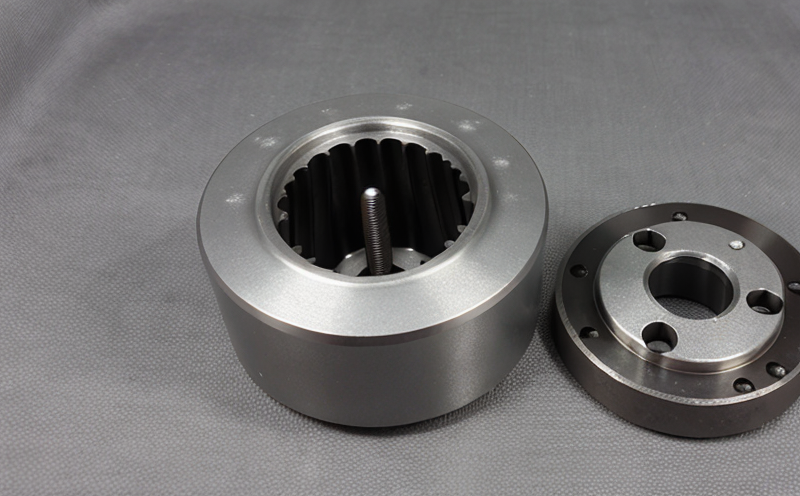ISO 4967 Non-Metallic Inclusion Testing of AM Alloys
The ISO 4967 standard is a critical tool in quality assurance and control for materials used in additive manufacturing (AM) processes. This service focuses on the non-metallic inclusion testing of alloys commonly employed in powder metallurgy and AM applications, ensuring that these materials meet stringent purity and performance criteria.
Non-metallic inclusions can significantly impact the mechanical properties and reliability of metals used in high-performance industries such as aerospace, automotive, and electronics. The presence of these inclusions can lead to reduced strength, increased brittleness, or even failure under stress. Therefore, precise identification and quantification are essential for ensuring the integrity of materials.
The testing process involves several key steps: specimen preparation, examination using optical microscopy or scanning electron microscopy (SEM), and quantitative analysis based on ISO 4967 criteria. The aim is to classify inclusions into different categories and measure their dimensions according to the standard's requirements. This service ensures compliance with international standards, which are crucial for maintaining a high level of trust within global supply chains.
For example, aluminum alloys used in AM processes must adhere to specific limits on non-metallic inclusions to ensure they meet the performance expectations set by ISO 4967. Our team uses advanced microscopes and specialized software tools to conduct these tests accurately and efficiently. This service not only helps manufacturers comply with international regulations but also enhances product quality, thereby reducing potential risks associated with material defects.
Our laboratory adheres strictly to the procedures outlined in ISO 4967, ensuring that every test conducted is accurate and reliable. By leveraging our expertise in metallurgy and extensive experience with AM processes, we provide comprehensive testing services tailored specifically for powder metallurgy and additive manufacturing alloys.
| Category | Description |
|---|---|
| Inclusion Type | Evaluates the presence of various types of non-metallic inclusions such as oxides, sulfides, silicates, etc. |
| Measurement Criteria | Quantifies inclusion size and distribution according to ISO 4967 guidelines. |
| Sample Preparation | Involves cleaning, cutting, and mounting samples for optimal examination. |
The rigorous application of ISO 4967 ensures that our testing results are consistent with international benchmarks. This consistency is vital not only for maintaining quality standards but also for facilitating seamless integration into global supply chains.
Our commitment to accuracy and reliability extends beyond mere compliance; it encompasses a proactive approach towards improving product performance through continuous improvement initiatives based on test findings. By offering ISO 4967 non-metallic inclusion testing, we contribute significantly to the development of high-quality materials suitable for demanding applications.
Applied Standards
The application of ISO 4967 is fundamental in ensuring that materials used in powder metallurgy and additive manufacturing meet stringent quality requirements. This standard provides a robust framework for identifying and quantifying non-metallic inclusions, which are critical factors affecting the performance and reliability of metals.
- ISO 4967 outlines the classification and measurement of non-metallic inclusions.
- It specifies detailed methods for specimen preparation and examination under controlled conditions.
- The standard includes criteria for assessing the size, shape, and distribution of inclusions within a given sample.
By adhering to these standards, manufacturers can ensure that their products meet not only local but also international quality expectations. This harmonization of testing procedures fosters trust among stakeholders across different regions, promoting smoother collaboration and trade.
The use of ISO 4967 in powder metallurgy and additive manufacturing processes is particularly important due to the unique challenges posed by these technologies. The high precision required for AM components necessitates precise control over material composition, which includes minimizing non-metallic inclusions to enhance part integrity and performance.
Customer Impact and Satisfaction
The implementation of ISO 4967 non-metallic inclusion testing significantly enhances customer satisfaction by providing reliable data that supports informed decision-making. For quality managers, compliance officers, R&D engineers, and procurement professionals involved in powder metallurgy and additive manufacturing projects, this service offers valuable insights into material purity and performance.
Accurate identification and quantification of non-metallic inclusions help manufacturers optimize their processes and improve product quality. This leads to increased efficiency in production cycles while reducing waste and rework costs associated with defective materials.
Customers benefit from enhanced trust within global supply chains as they can rely on consistent testing results that align with international standards. This reliability fosters long-term relationships between suppliers and end-users, ensuring mutual satisfaction and success.
The detailed reports generated by our laboratory include comprehensive analyses of inclusion types, sizes, and distributions according to ISO 4967 criteria. These reports serve as valuable tools for process optimization and quality assurance initiatives aimed at maintaining high standards across various industries.
Our commitment to excellence in testing ensures that customers receive accurate and timely results, enabling them to make well-informed decisions regarding material selection and process adjustments. By leveraging this service, clients can confidently meet regulatory requirements and market demands while enhancing overall product performance.
International Acceptance and Recognition
The ISO 4967 standard enjoys widespread acceptance across the globe, making it a cornerstone in quality assurance for powder metallurgy and additive manufacturing. Its recognition by regulatory bodies, industry associations, and leading organizations underscores its significance in ensuring consistent material quality.
- ISO 4967 is widely accepted in aerospace, automotive, and electronics sectors.
- Regulatory authorities incorporate these standards into their guidelines for metalworking processes.
- Industry associations recommend compliance with ISO 4967 to maintain high-quality practices.
The broad acceptance of this standard facilitates seamless integration into global supply chains by ensuring that materials meet uniform quality criteria regardless of geographical location. This harmonization of testing procedures promotes trust among stakeholders, fostering smoother collaboration and trade.
Our laboratory’s adherence to ISO 4967 ensures that our testing results are consistent with international benchmarks, providing customers with reliable data that supports informed decision-making. By offering this service, we contribute to the development of high-quality materials suitable for demanding applications across various industries.





